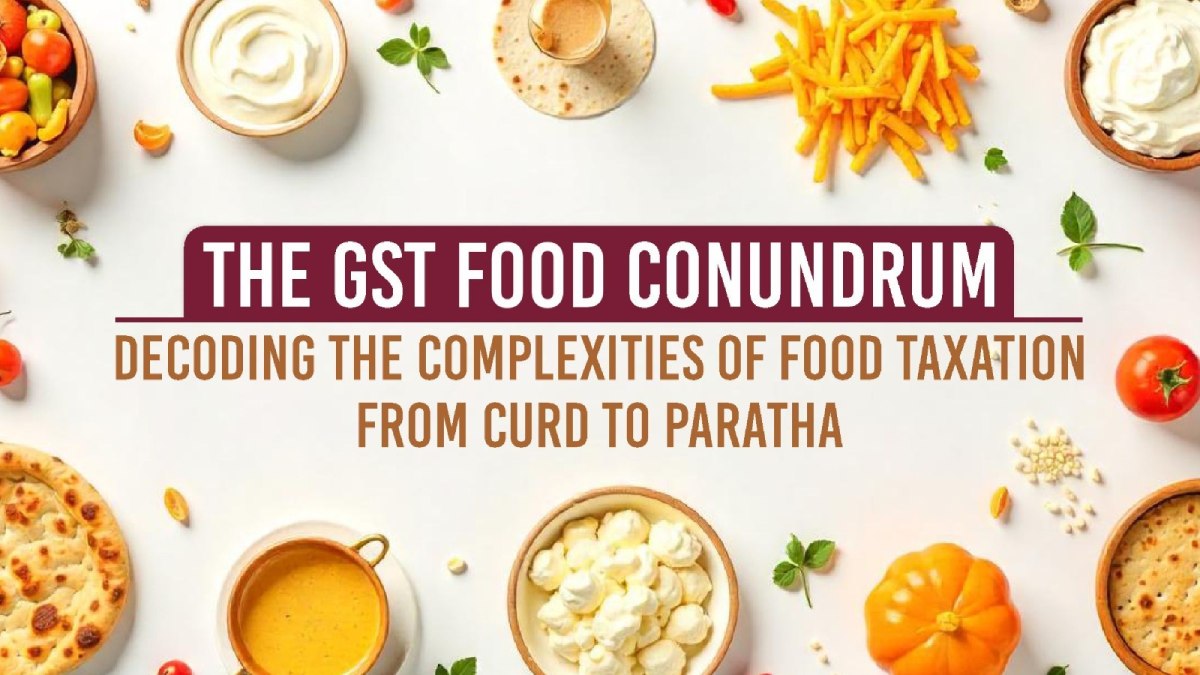
Introduction
When you think about food, you might imagine flavors, textures, and culinary traditions. However, in India, food is also a topic of intense discussion under the Goods and Services Tax (GST) regime. Questions like, “What’s the difference between a roti and a paratha?” or “Is yogurt different from curd?” aren’t just gastronomic curiosities – they’re crucial distinctions that determine the tax rates you’ll pay.
Recently, GST on food items has been thrust back into the spotlight following a discussion between Union Finance Minister Nirmala Sitharaman and industry stakeholders in Coimbatore. Let’s explore the complex GST classifications on food items and understand why even the tiniest difference can lead to vastly different tax rates.
Confusion Over GST Rates on Food
India’s GST system classifies food items into different tax brackets, ranging from 0% to 18%. The complexity arises when seemingly similar items are taxed at different rates. For example:
- Plain buns attract no GST, but cream-filled buns are taxed at 18%.
- Sweets carry a 5% GST rate, while savouries are taxed at 12%.
Despite the light-hearted tone of the discussion, the reality is far from amusing, as many restaurants have received tax notices and demands due to confusion over these rates.
The Role of Location: Where You Eat Matters
A key factor affecting GST rates is where and how the food is consumed. Here’s a breakdown:
- Restaurants: All food and drinks (except alcohol) served in a regular restaurant are taxed at 5%.
- Hotels: If the restaurant is within a hotel with room rates of ₹7,500 or more per night, the GST rate jumps to 18%. If room rates are lower, the GST remains at 5%.
- Pre-Packaged Foods: If you buy pre-packaged food items to take away, the GST rates vary further. For instance, a paratha you eat in a restaurant may attract a 5% GST, but if you buy a pre-packaged packet of parathas, you will be charged 18%.
When Physics and Chemistry Enter Taxation
Believe it or not, the tax rates can be influenced by scientific principles:
The Roti-Paratha Conundrum
One of the most famous cases involved differentiating between a roti and a paratha. According to the Gujarat Authority for Advance Ruling (AAR), pre-packaged rotis attract a 5% GST, while parathas are taxed at 18%. The reason? Physics and chemistry!
- Roti: Ready to eat as is.
- Paratha: Needs to be heated for 3-4 minutes before consumption.
Because parathas need heating to be fit for consumption, they fall into a different tax category.
The Bizarre Case of Water
Water also falls into the GST maze:
- Unpackaged Water: 0% GST
- Bottled Water (<20 litres): 18% GST
- Bottled Water (≥20 litres): 12% GST And if you cool water to make ice (5% GST) or heat it to steam (12% GST), the rate changes again!
Curd vs. Yoghurt: It’s All About the Bacteria
Tax classifications can even boil down to the type of bacteria used in production:
- Curd: Made at home or by local vendors using edible acids.
- Yoghurt: Produced using live bacterial cultures and usually in industrial settings.
As a result, curd can be tax-free if unpackaged, but yoghurt attracts a 5% GST regardless of packaging.
Ice Cream Parlours: Are They Restaurants?
In 2021, the GST Council clarified that ice cream parlours are not the same as restaurants because they serve “already manufactured” ice cream. This means ice cream sold in parlours is taxed at 18%, while ice cream served as dessert in a restaurant is taxed at 5%. However, this has led to confusion, with ice cream parlours across India facing tax notices for not charging the correct GST rates.
Conclusion
The complexity of GST rates on food items in India is a multi-disciplinary puzzle, involving not just economics but also physics, chemistry, and even microbiology. While the government is reviewing these rates, the current situation has led to confusion, misinterpretation, and significant challenges for businesses across the country.
As the Finance Minister mentioned, there’s a broader review of GST rationalization underway. Until then, the interplay between the chemistry of curd and the physics of paratha continues to be an everyday reality for consumers and restaurateurs alike.
